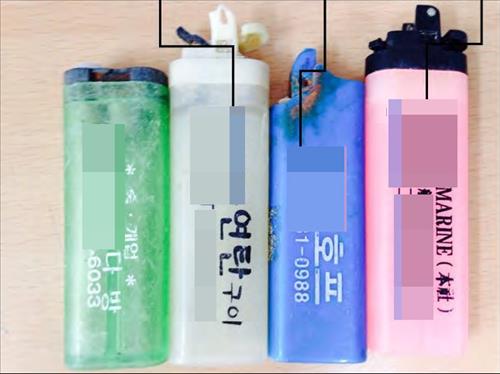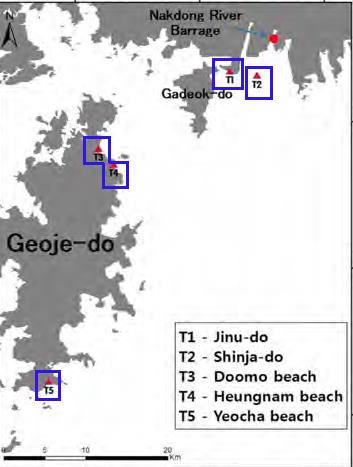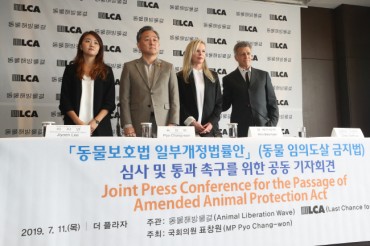- Bukyong National University collected 166 lighters from five beaches near the mouth of the Nakdong River every two months, for two years, in 2012 and 2013. (Image : Yonhap)
BUSAN, Oct. 26 (Korea Bizwire) – After two years of collecting disposable lighters that washed up on the shores near the mouth of the Nakdong River, results on where the trash came from have been revealed.
Professor Yoon Hong-ju’s team at Bukyong National University collected 166 lighters from five beaches near the mouth of the Nakdong River every two months, for two years, in 2012 and 2013.
The research team estimated the origins of the trash based on phone numbers and business names printed on some of the lighters.
The researchers explained that even though other items such as plastic bottles and syringes also have information about where they are made, they have a large distribution range and migrate a lot, which convinced them to select lighters to carry out their investigation.
Other than the 84 lighters that had a foreign address, or no address at all, 42 lighters were from Gyeongsangnam-do Province, 17 from Gyeongsangbuk-do Province, 16 from Busan and seven from Daegu.

The research team estimated the origins of the trash based on phone numbers and business names printed on some of the lighters. (Image : Yonhap)
The research was conducted under the hypothesis that if there is a reason why garbage including disposable lighters is accumulating, data will be concentrated near the region where the dominant factor is, if not the data should be dispersed more randomly.
The processed result of the data gathered was 0.52, which is a meaningful number because it is smaller than 1. The research team explained that the quantity and spill sites of the disposable lighters could represent the location where the trash was discharged.
The results of the research could be used to decide who should cover the costs of cleaning up the garbage that gathers at the mouth of the Nakdong River.
However, the study has its shortcomings, as the team assumed that the lighters were not moved to a different location from the addresses written on them. The research team is optimistic that they can overcome the limitations by collecting lighters for a longer period of time, and from more locations.

42 lighters were from Gyeongsangnam-do Province, 17 from Gyeongsangbuk-do Province, 16 from Busan and seven from Daegu. (Image : Yonhap)
Tracking down the location of garbage in the sea using disposable lighters was a research method first employed by the Japanese scholar Fujieta, as he analyzed the lighters he gathered for 10 years. However, this study marked the first time that this type of research was conducted in Korea.
By Lina Jang (linajang@koreabizwire.com)







